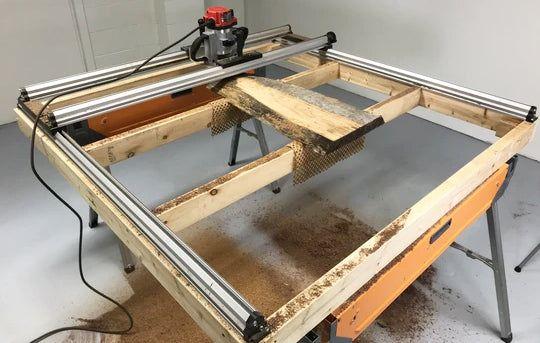Advanced Materials and Technologies in Linear Bearings: Enhancing Performance and Durability

The performance and durability of linear bearings are significantly influenced by the materials used in their construction and the advanced technologies employed in their design and manufacturing. As industries demand higher precision, greater load capacities, and longer service life, advancements in materials science and manufacturing techniques are driving innovation in linear bearing technology. This article explores the latest materials and technologies used in linear bearings, highlighting their benefits and applications.
Advanced Materials in Linear Bearings
- High-Strength Steels: High-strength steels, such as alloy steels and stainless steels, are commonly used in linear bearings to provide high load capacities and resistance to wear and corrosion. These materials are often heat-treated to further enhance their hardness and durability.
- Ceramic Materials: Ceramic materials, such as silicon nitride (Si3N4) and aluminum oxide (Al2O3), offer exceptional hardness, stiffness, and resistance to wear and corrosion. Ceramic linear bearings are ideal for applications where high precision and long service life are required, such as semiconductor manufacturing and medical equipment.
- Polymers and Composites: Polymers and composite materials, such as PTFE (Teflon), PEEK (polyether ether ketone), and fiber-reinforced composites, are used in plain linear bearings to provide low friction, self-lubrication, and resistance to chemical attack. These materials are often used in applications where lubrication is not possible or desirable.
- Coatings and Surface Treatments: Coatings and surface treatments, such as hard chrome plating, electroless nickel plating, and titanium nitride (TiN) coating, are applied to linear bearing components to enhance their hardness, wear resistance, and corrosion resistance. These treatments can significantly extend the service life of linear bearings in harsh environments.
Advanced Technologies in Linear Bearings
- Precision Grinding and Honing: Precision grinding and honing techniques are used to achieve extremely tight tolerances and smooth surface finishes on linear bearing components. These techniques ensure accurate and consistent performance.
- Finite Element Analysis (FEA): FEA is used to optimize the design of linear bearings, ensuring that they can withstand the applied loads and stresses without deformation or failure. FEA can also be used to predict the performance of linear bearings under different operating conditions.
- 3D Printing (Additive Manufacturing): 3D printing is being used to create custom linear bearing designs with complex geometries. This technology enables engineers to optimize the performance of linear bearings for specific applications and to create prototypes quickly and cost-effectively.
- Smart Sensors and Monitoring Systems: Integrating smart sensors and monitoring systems into linear bearings enables real-time monitoring of performance parameters such as load, speed, vibration, and temperature. This data can be used to optimize system performance, predict maintenance needs, and prevent failures.
- Self-Lubricating Technologies: Self-lubricating technologies, such as solid lubricant inserts and oil-impregnated materials, are used to reduce the need for external lubrication and to extend the service life of linear bearings. These technologies are particularly useful in applications where lubrication is difficult or impossible.
Applications of Advanced Linear Bearings
- High-Precision Machine Tools: Advanced linear bearings are used in high-precision machine tools to achieve extremely tight tolerances and smooth surface finishes.
- Semiconductor Manufacturing Equipment: They are used in semiconductor manufacturing equipment to provide precise and reliable linear motion in critical processes such as wafer handling and inspection.
- Medical Devices: Advanced linear bearings are used in medical devices such as MRI and CT scanners to provide smooth and accurate motion with minimal vibration.
- Aerospace Applications: They are used in aerospace applications such as aircraft control systems and satellite positioning mechanisms to provide high performance and reliability in harsh environments.
- Robotics: Advanced linear bearings are used in robotic systems to provide precise and repeatable motion with high load capacities.
Conclusion
Advanced materials and technologies are revolutionizing the design and manufacturing of linear bearings, enabling significant improvements in performance, durability, and reliability. By embracing these innovations, engineers and designers can create more efficient, precise, and robust systems for a wide range of applications.
Αναζήτηση
Κατηγορίες
- Art
- Causes
- Crafts
- Dance
- Drinks
- Film
- Fitness
- Food
- Παιχνίδια
- Gardening
- Health
- Κεντρική Σελίδα
- Literature
- Music
- Networking
- άλλο
- Party
- Religion
- Shopping
- Sports
- Theater
- Wellness
Διαβάζω περισσότερα
探索電子煙新世界:VapesStoreTW引領潮流新風尚
在電子煙日益流行的今天,選擇壹個可靠的電子煙品牌和商家變得尤爲重要。VapesStoreTW,作爲電子煙領域的領航者,憑借其豐富的産品種類、卓越的品質以及貼心的服務,成爲了衆多電子煙愛好者的首選...
How Cenforce 100 Helps Couples Rebuild Intimacy and Trust
Communication, trust, and emotional connection can all be subtly impacted when intimacy in a...
YSL Niki 包款尺寸全解析|大號復古皮革鏈條包與中小號推薦
在精品時尚界,ysl bags 一直是經典與潮流的代表,無論是日常穿搭還是正式場合,都能完美提升氣質。其中,備受矚目的 YSL Niki...
Gas Chromatography Food Testing Market Dynamics: Key Drivers and Restraints
"Executive Summary Gas Chromatography Food Testing Market :
Gas chromatography...



